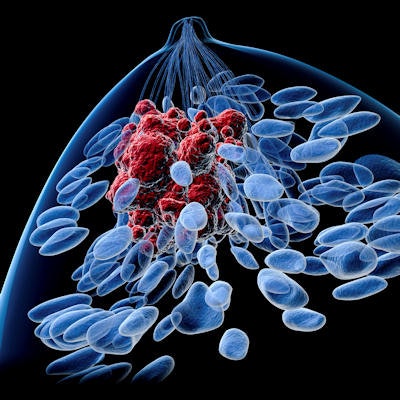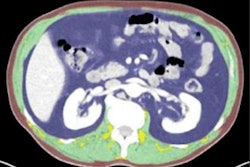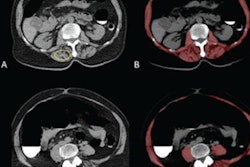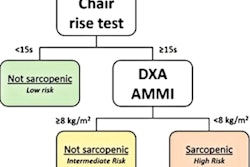
Measurements of muscle mass and adiposity drawn from the CT scans of patients with breast cancer predicted their survival better than calculations of body mass index (BMI), according to research published online April 5 in JAMA Oncology.
A number of studies have identified a correlation between body composition measures on CT and cancer survival, noted first author Bette Caan of Kaiser Permanente in Oakland, CA. Several of these studies have also indicated that these measures may provide better prognostic information than traditional BMI.
Applying this concept specifically for the assessment of breast cancer, Caan and colleagues evaluated the muscle mass, total adipose tissue, and various other body composition measures on the CT scans of 3,241 women diagnosed with stage II or III nonmetastatic breast cancer (JAMA Oncol, April 5, 2018).
The women were all patients at Kaiser Permanente of Northern California and Dana-Farber Cancer Institute in Boston who underwent CT scanning at the time of cancer diagnosis. Their median age was 54 years, and 1,086 (34%) of them had sarcopenia, i.e., low muscle mass.
Upon analyzing the data, the group found that patients with sarcopenia had a 41% greater risk of dying compared to those without sarcopenia. This relationship remained after adjusting for age, BMI, cancer stage, and emergency status. Similarly, patients with high total adipose tissue had much higher overall mortality, or hazard ratio, than those with low total adipose tissue, whether or not they had sarcopenia.
As a result, the overall survival rate of patients who had both sarcopenia and high total adipose tissue was lower than patients without these conditions. The difference was statistically significant (p < 0.001).
What's more, CT-based muscle mass and fat content measurements demonstrated a stronger association with mortality than even high BMI. The standard measure of obesity -- a BMI of at least 30 -- turned out not to have a statistically significant association with overall mortality and did not identify patients at risk of death due to body composition.
| CT measurements vs. body mass index for predicting breast cancer mortality | ||||
| BMI | Muscle and fat on CT | |||
| Overweight | Obese | Sarcopenic, medium adiposity | Sarcopenic, high adiposity | |
| Hazard ratio | 0.96 | 1.10 | 1.81 | 1.89 |
The results emphasize the importance of maintaining and building muscle mass for breast cancer survivors, Dr. Elisa Bandera, PhD, from the Rutgers Cancer Institute of New Jersey and Esther John, PhD, from the Cancer Prevention Institute of California noted in an invited commentary.
"Future studies should aim to evaluate body composition effects by tumor subtype and by race/ethnicity, as well as examine in more detail the confounding and/or modifying effects of treatment and its effect on changes in body composition during the follow-up period," they wrote.



















